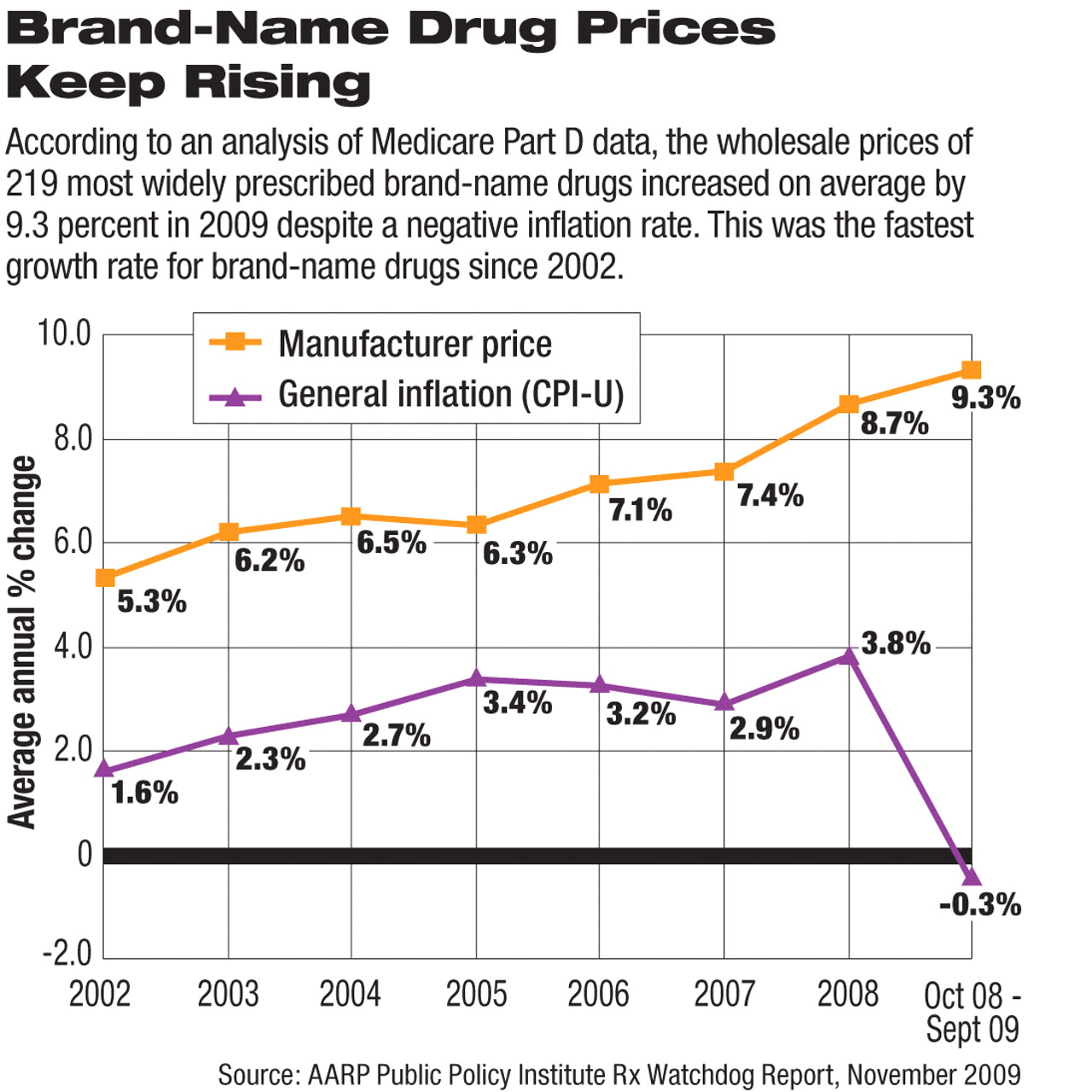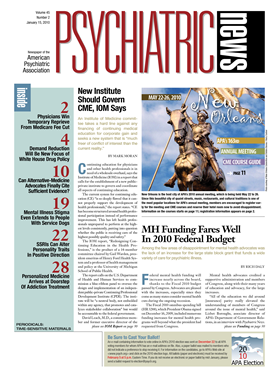The average price of brand-name prescription drugs rose by an annual rate of 9.3 percent in 2009, the largest growth rate since 2002, according to a report released by the AARP.
During the same period, the annual general inflation rate as measured by the Consumer Price Index-All Urban Consumers for All Items (CPI-U) was down 0.3 percent.
The report was produced by the AARP Public Policy Institute's Rx Watchdog, led by Stephen Schondelmeyer, Pharm.D., Ph.D., who is the head of the Department of Pharmaceutical Care and Health Systems and a professor of pharmaceutical economics at the University of Minnesota College of Pharmacy. The Rx Watchdog group has been reporting drug-price changes since 2004.
The drug-price trend in the report reflects changes in the wholesale acquisition cost, which is the price manufacturers charge to wholesalers and other direct purchasers, such as retail pharmacy chains and hospital outpatient pharmacies, before discounts or rebates. The authors analyzed price changes of the most-prescribed drugs for Medicare Part D recipients, which included 219 brand-name drugs, 144 specialty drugs, and 185 generic drugs.
Among the top 25 brand-name drugs were Aricept, Lexapro, Ambien, and Seroquel. Their wholesale price increases ranged from 6 percent to nearly 19 percent.
On average, the price of specialty drugs spiked by 10.3 percent in 2009. In this report, specialty drugs included products that are administered by injection (excluding insulin, which is sold over the counter), have a dosage form costing more than $1,000 per prescription or more than $33 per day of therapy, or are commonly used as adjunctive therapy with other specialty medications. Biologics, antiretrovirals, and anticancer drugs are generally placed in this class. Both brand-name and specialty drugs have been on an upward price trend since 2002.
In contrast, the price of generic drugs declined 8.7 percent last year. Generic-drug prices have dropped every year from 2004 to 2009.
When all three types of prescription drugs were combined, overall drug prices rose 5.4 percent from the previous year. From 2004 to 2009, the year-to-year price change ranged from 4 percent to 5.4 percent.
The annual rate up to the third quarter of 2009 was calculated based on averaged data from October 2008 through September 2009.
Immediately after the AARP report was released, four influential members of Congress—Reps. Charles Rangel (D-N.Y.), Henry Waxman (D-Calif.), Pete Stark (D-Calif.), and John Lewis (D-Ga.)—sent a letter to the Government Accountability Office (GAO) requesting an expedited report on prescription-drug pricing to verify the AARP report data. They also asked the GAO to recommend ways to monitor the pharmaceutical industry's pricing practices.
Also in response to the report, the Pharmaceutical Research and Manufacturers of America (PhRMA), the drug industry's trade group, released a statement on November 18, 2009, claiming that the AARP report contained “misleading use of statistics” and that media reports were “sensationalized.” PhRMA argued that drug pricing is the result of “market forces,” which include everything from patent expirations to massive research-and-development costs for new drugs that often fail to reach the market.


